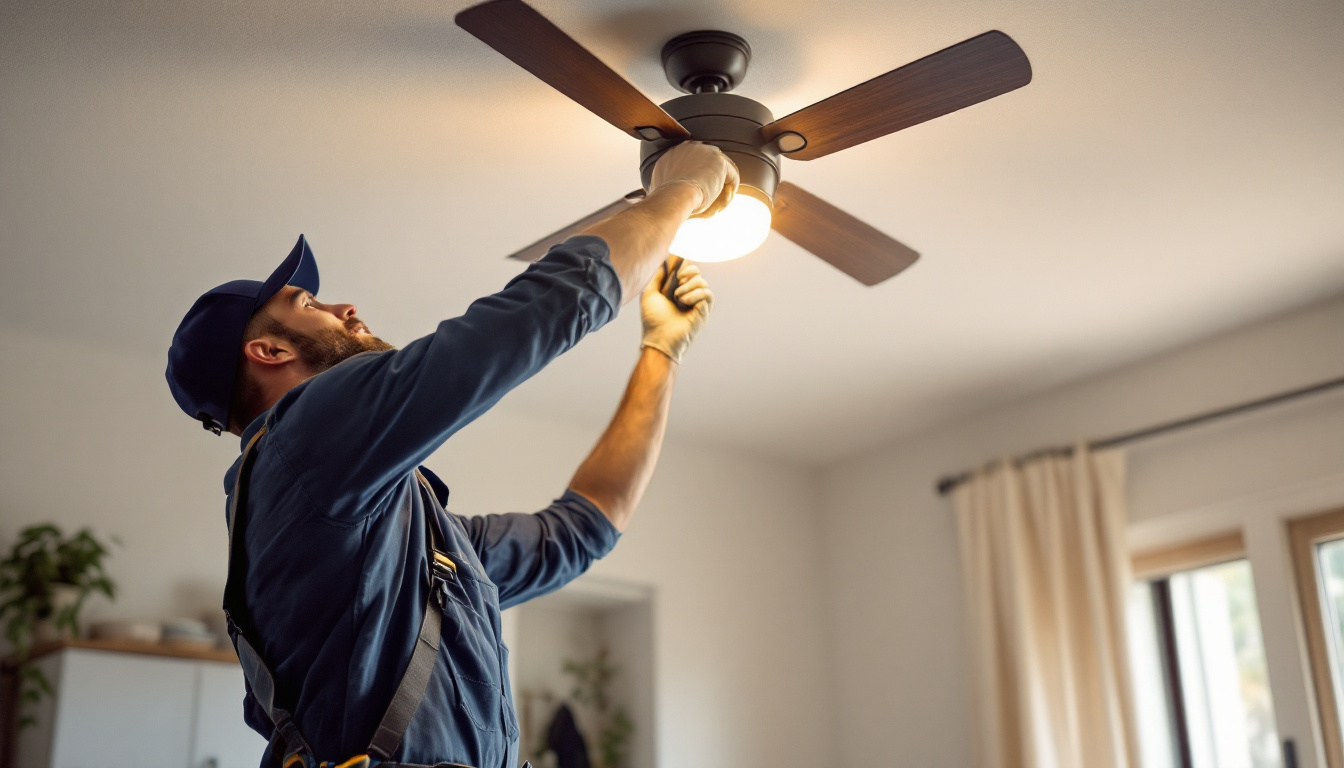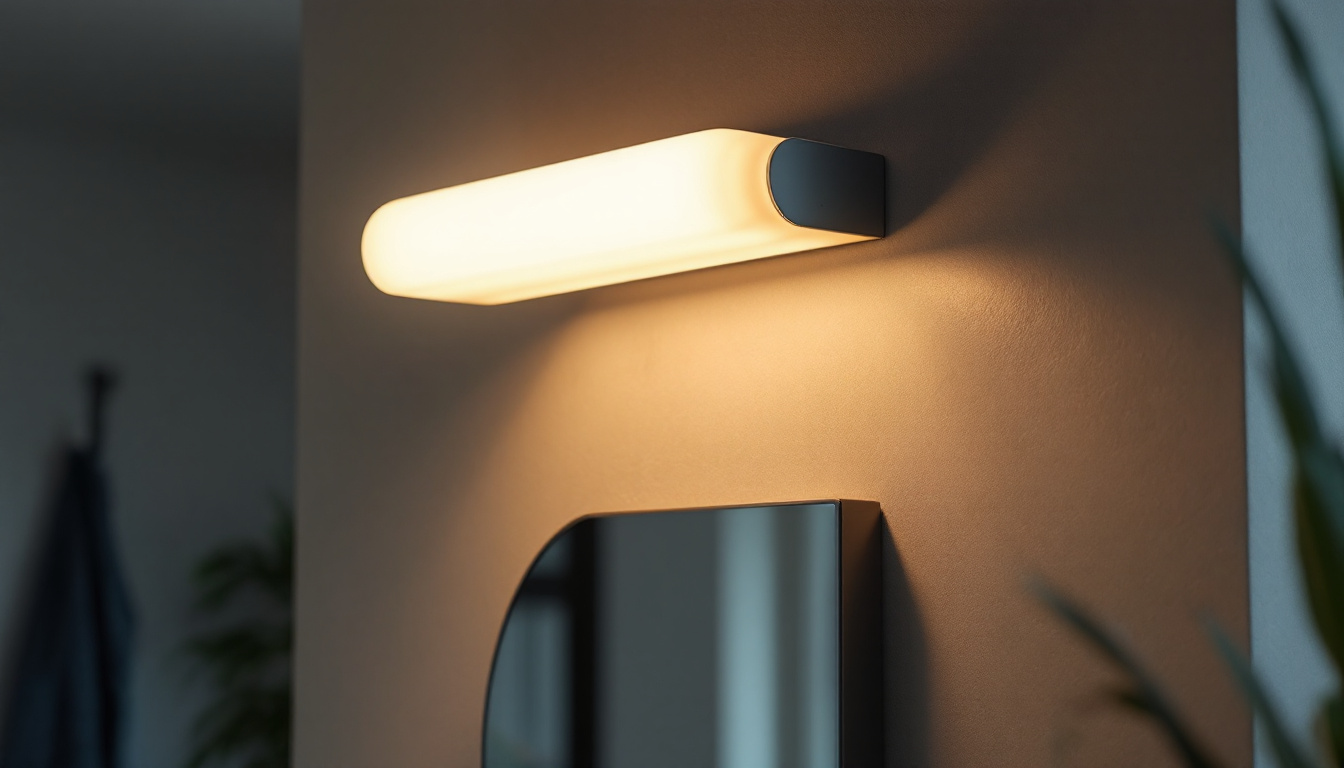

Can light fans, also known as recessed lighting fans, have become a popular choice in modern lighting design. They combine the functionality of both lighting and ventilation, making them an ideal solution for various spaces, from living rooms to kitchens. However, despite their growing popularity, many lighting contractors still make critical mistakes when installing these fixtures. Understanding these common pitfalls can help contractors enhance their service quality and improve client satisfaction.
proper installation of can light fans is essential not only for aesthetic appeal but also for safety and functionality. An incorrectly installed fixture can lead to a range of issues, including inadequate lighting, poor air circulation, and even electrical hazards. Therefore, it is vital for lighting contractors to be aware of the common mistakes that can arise during the installation process. Moreover, an improperly installed can light fan can result in increased energy costs, as the fan may not operate efficiently, leading homeowners to seek out replacements sooner than necessary. This not only affects the contractor’s reputation but can also lead to financial losses for both the contractor and the client.
Before diving into the common mistakes, it is crucial to understand the components involved in a can light fan. Typically, these fixtures consist of a housing unit, a fan motor, and a light source. Each component must be compatible and installed correctly to ensure optimal performance. Failing to recognize the importance of each part can lead to significant installation errors. For instance, the housing unit must be appropriately sized for the ceiling space, while the fan motor should be selected based on the room’s dimensions to provide adequate airflow. Additionally, the choice of light source—whether LED, incandescent, or fluorescent—can greatly influence both the ambiance and energy efficiency of the space. Understanding these nuances allows contractors to make informed decisions that enhance the overall functionality and aesthetic of the installation.
Lighting contractors often encounter various challenges when installing can light fans. Below are some of the most common mistakes made during the installation process.
One of the most frequent errors is selecting the wrong size of can light fans for the space. Using fixtures that are too small can result in insufficient lighting, while oversized fixtures can overwhelm a room’s aesthetic. Proper sizing requires an understanding of the room’s dimensions, ceiling height, and overall design.
Contractors should take the time to measure the space accurately and consider the lumen output required for effective illumination. Consulting lighting design guidelines can also provide valuable insights into the appropriate sizing of fixtures. Furthermore, it’s beneficial to consider the color temperature of the bulbs being used, as this can significantly impact the perception of space and mood. Warmer tones can create a cozy atmosphere, while cooler tones are often better suited for workspaces.
The placement of can light fans is crucial for achieving balanced lighting and airflow. A common mistake is installing fixtures too close to walls or in positions that create shadows. This can lead to uneven lighting and diminish the overall ambiance of the room.
To avoid this, contractors should plan the layout carefully. Utilizing a lighting design software can help visualize the placement of fixtures and ensure optimal distribution of light. Additionally, considering the room’s function can guide placement decisions, as different activities may require varying levels of illumination. For instance, in a kitchen, task lighting over countertops is essential, while in a living room, ambient lighting may take precedence. Moreover, incorporating dimmer switches can provide flexibility in adjusting light levels according to the time of day or activity, enhancing the overall functionality of the space.
Adhering to electrical safety codes is non-negotiable in any lighting installation. Unfortunately, some contractors overlook these regulations, leading to potential hazards. This may include improper wiring, lack of grounding, or using non-rated fixtures in damp areas.
Contractors must familiarize themselves with local electrical codes and ensure that all installations comply with safety standards. This not only protects the clients but also enhances the contractor’s reputation for quality work. Additionally, it is wise to conduct a thorough inspection of all materials and tools before beginning the installation process. Ensuring that all components are rated for the intended use can prevent future issues and maintain the integrity of the installation. Regular training and updates on safety protocols can also keep contractors informed about the latest regulations and best practices in the industry.
Wiring and connections are critical aspects of can light fan installations. Mistakes in this area can lead to malfunctioning fixtures or even electrical fires. Below are some common wiring-related errors.
Using the wrong wire gauge can result in insufficient power supply to the fan and lights, leading to flickering or dimming. Many contractors may underestimate the importance of selecting the appropriate gauge for the load, which can create long-term issues.
It is essential to calculate the total wattage of the fixtures and select a wire gauge that can handle the load safely. Consulting the National Electrical Code (NEC) can provide guidelines on the appropriate wire sizes for different applications.
Junction boxes play a vital role in electrical installations, providing a safe enclosure for wire connections. However, some contractors neglect to install junction boxes or fail to secure them properly. This oversight can lead to exposed wires, increasing the risk of electrical hazards.
Contractors should always ensure that junction boxes are installed according to code and that they are accessible for future maintenance. Properly securing all connections within the junction box is also essential to prevent any accidental disconnections.
Can light fans serve a dual purpose of providing light and ventilation. However, many contractors overlook the importance of proper ventilation during installation. This can lead to a range of issues, from poor air circulation to increased energy costs.
One common mistake is installing can light fans without considering the airflow needs of the space. Insufficient airflow can lead to overheating, especially in areas like kitchens or bathrooms where humidity levels are high. This can compromise the fan’s efficiency and lifespan.
Contractors should assess the room’s ventilation requirements and select fans that provide adequate airflow. Additionally, ensuring that the fan is installed at the correct height can enhance its effectiveness in circulating air.
Another oversight is neglecting the ductwork requirements for the fan. Proper ducting is essential for efficient ventilation and can significantly impact the fan’s performance. Some contractors may attempt to cut corners by using inadequate duct sizes or failing to insulate ducts properly.
To avoid this mistake, contractors should familiarize themselves with the manufacturer’s specifications regarding ductwork. Ensuring that the duct size is appropriate for the fan’s CFM (cubic feet per minute) rating can enhance the overall efficiency of the system.
effective communication with clients is vital for successful can light fan installations. However, many contractors fail to educate their clients about the features and maintenance of the fixtures, leading to misunderstandings and dissatisfaction.
Some contractors may assume that clients understand how to operate and maintain their new can light fans. This can result in clients misusing the fixtures, leading to premature wear or malfunction. Providing clear instructions on usage and maintenance is essential for ensuring client satisfaction.
Contractors should take the time to explain the features of the can light fan, including how to adjust settings and perform basic maintenance. Providing a user manual or a quick reference guide can also be beneficial for clients.
Another common mistake is not discussing the aesthetic aspects of can light fans with clients. The design and style of the fixtures should complement the overall decor of the space. Contractors should engage clients in discussions about their preferences and offer suggestions that align with their vision.
By considering aesthetics alongside functionality, contractors can enhance the overall satisfaction of their clients and create a cohesive design that meets their needs.
After the installation of can light fans, many contractors neglect the importance of follow-up. A post-installation check-in can provide valuable insights into the client’s experience and address any potential issues.
Following up with clients allows contractors to address any concerns or questions that may arise after installation. This proactive approach demonstrates a commitment to customer service and can help build long-term relationships with clients.
Contractors should schedule a follow-up visit or call to ensure that the fixtures are functioning as expected. This provides an opportunity to resolve any issues promptly and reinforces the contractor’s dedication to quality work.
Feedback from clients can be invaluable for improving future installations. Contractors should take the time to gather feedback on the installation process, the performance of the fixtures, and overall satisfaction. This information can help identify areas for improvement and enhance the contractor’s skills and services.
Encouraging clients to leave reviews or testimonials can also bolster the contractor’s reputation and attract new business. A satisfied client is often the best marketing tool.
Can light fans offer a versatile solution for modern lighting and ventilation needs. However, avoiding common mistakes during installation is crucial for ensuring optimal performance and client satisfaction. By understanding the importance of proper sizing, placement, electrical safety, and ventilation, lighting contractors can significantly enhance their service quality.
Additionally, effective communication with clients and post-installation follow-up can foster strong relationships and lead to repeat business. By prioritizing these aspects, lighting contractors can establish themselves as trusted professionals in the industry, ultimately leading to greater success and client satisfaction.
Don’t let common installation errors dim your project’s success. At LumenWholesale, we provide lighting contractors with the high-quality, spec-grade lighting products you need to illuminate any space flawlessly. Say goodbye to inflated markups and hello to unbeatable wholesale prices, all while enjoying the convenience of free shipping on bulk orders. Elevate your lighting installations with our industry-standard selection and ensure every can light fan is a beacon of reliability and performance. Ready to enhance your service quality with premium lighting solutions? Discover the best value in wholesale lighting by visiting Wholesale Lighting at the Best Value today.

Discover essential tips for selecting vanity light fixtures that stand the test of time.

Discover why purchasing outdoor string lights in bulk from local distributors might not be the bright idea you think it is.

Discover innovative strategies for selecting and installing exhaust fans in your shop with insights from expert lighting contractors.

Discover how choosing the right outlets and receptacles can significantly boost the efficiency of your lighting projects.
Get notified when NEW deals are released.
Optimize your budget with wholesale discounts.
Only top-quality, specification-grade lighting products.
No additional costs at checkout - what you see is what you pay.
We understand the unique needs of contractors.